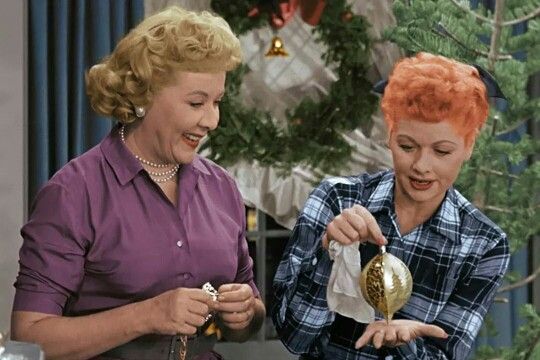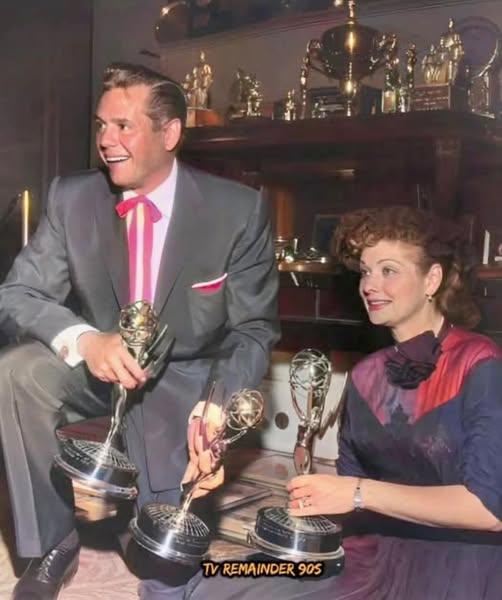
Seventy-four years ago, on October 15, 1951, American television changed forever. That was the night “I Love Lucy” premiered on CBS, introducing the world to Lucille Ball and Desi Arnaz in a sitcom that would not only redefine comedy but also lay the foundation for how television is made and loved today.
Few shows in entertainment history have had the cultural, technical, and emotional impact of I Love Lucy. What began as a daring experiment — a real-life married couple starring together on a weekly comedy — turned into a television revolution that continues to influence modern sitcoms, production styles, and even celebrity culture nearly eight decades later.
The Birth of a Television Classic
When I Love Lucy first aired, television was still a new medium, finding its footing after the postwar boom. Most shows were filmed live from New York, broadcast once, and then forgotten. But Lucille Ball, a seasoned actress and comedic powerhouse, and her husband Desi Arnaz, a Cuban bandleader, had a different vision.
Ball had been starring in a successful CBS radio show, My Favorite Husband, and when the network wanted to adapt it for TV, she agreed — on one condition: Desi Arnaz had to play her on-screen husband. CBS initially resisted, believing American audiences wouldn’t accept a mixed-race couple. Determined to prove them wrong, Ball and Arnaz created a live touring act to showcase their chemistry. It was a hit — and CBS couldn’t ignore the public’s enthusiasm.
Thus, I Love Lucy was born, starring Lucille Ball as Lucy Ricardo, Desi Arnaz as Ricky Ricardo, Vivian Vance as Ethel Mertz, and William Frawley as Fred Mertz.
A Revolutionary Production
Beyond its iconic humor, I Love Lucy revolutionized how television was made. Desi Arnaz, who also served as producer, insisted that the show be filmed in Hollywood instead of broadcast live from New York — a decision that would change TV forever.
To make it work, Arnaz and cinematographer Karl Freund pioneered the three-camera filming system in front of a live studio audience. This innovation allowed for seamless editing, natural performances, and high-quality recordings that could be rebroadcast — the origin of the TV rerun.
That single decision turned I Love Lucy into the first show to achieve nationwide syndication, ensuring that generations could enjoy it long after its original run. It also gave birth to the modern sitcom format still used today by hits like Friends, The Big Bang Theory, and Modern Family.
Even more groundbreaking, Ball and Arnaz formed Desilu Productions, their own studio, which later produced legendary series such as Star Trek and Mission: Impossible. Their business model became the blueprint for modern independent television production.

The Comedy That Captured America
At the heart of I Love Lucy was Lucille Ball’s unmatched talent for physical comedy. Whether she was stomping grapes, stuffing chocolates on an assembly line, or trying to sneak into Ricky’s nightclub act, her timing, expressions, and fearlessness created comedic gold.
Ball’s portrayal of Lucy Ricardo — the mischievous, ambitious housewife always getting herself into trouble — resonated with millions of viewers. She wasn’t just funny; she was real. Audiences saw themselves in Lucy’s dreams, frustrations, and endless determination to prove herself.
And then there was the chemistry. Ball and Arnaz’s real-life marriage gave their on-screen relationship authenticity, even when chaos erupted. Ricky’s exasperated “Lucy! You got some splainin’ to do!” became one of television’s most iconic lines.
Every Monday night, over 40 million Americans tuned in — more than half the country’s TV audience — to watch the Ricardos and the Mertzes navigate life, love, and laughter.
A Cultural and Social Milestone
I Love Lucy was more than entertainment; it was a cultural milestone. Lucille Ball became one of the first women to run a major television studio, breaking barriers in an industry dominated by men.
The show also broke new ground by depicting a Latino-American lead character, with Arnaz’s Cuban heritage proudly front and center — a rarity in 1950s America. Their interracial marriage was quietly revolutionary, helping normalize diversity on television decades before it became common.
And when Ball’s real-life pregnancy was written into the show in 1952 — making Lucy Ricardo one of the first pregnant characters ever depicted on TV — it shattered another taboo. The episode in which Lucy gives birth, “Lucy Goes to the Hospital,” drew over 44 million viewers, surpassing even President Eisenhower’s inauguration coverage that year.
The Legacy That Lives On
When I Love Lucy ended its original run in 1957, it had already cemented itself as the gold standard of television comedy. It went on to win five Emmy Awards, including Best Situation Comedy, and continues to rank among the greatest shows of all time in critics’ lists from TV Guide, Time Magazine, and Rolling Stone.
But perhaps its greatest legacy is its endurance. Seventy-four years later, I Love Lucy still airs daily in syndication and streaming platforms, captivating audiences across generations. The laughter is timeless; the charm, undiminished.
Lucille Ball’s influence continues to ripple through Hollywood. Comedians from Carol Burnett to Tina Fey to Amy Poehler have credited her as a pioneer who made it possible for women to lead with humor and intelligence.
Remembering Lucy — and the Show That Changed Everything
On this anniversary, fans around the world celebrate not just the debut of a TV show, but the beginning of a cultural phenomenon. I Love Lucy wasn’t just funny — it was fearless. It dared to take risks, challenge conventions, and bring joy to millions during an era when the world needed laughter most.
As Lucille Ball once said, “I’m not funny. What I am is brave.” That bravery — on-screen and off — forever transformed television.
Seventy-four years later, “I Love Lucy” still reminds us that laughter, love, and a little chaos never go out of style.
